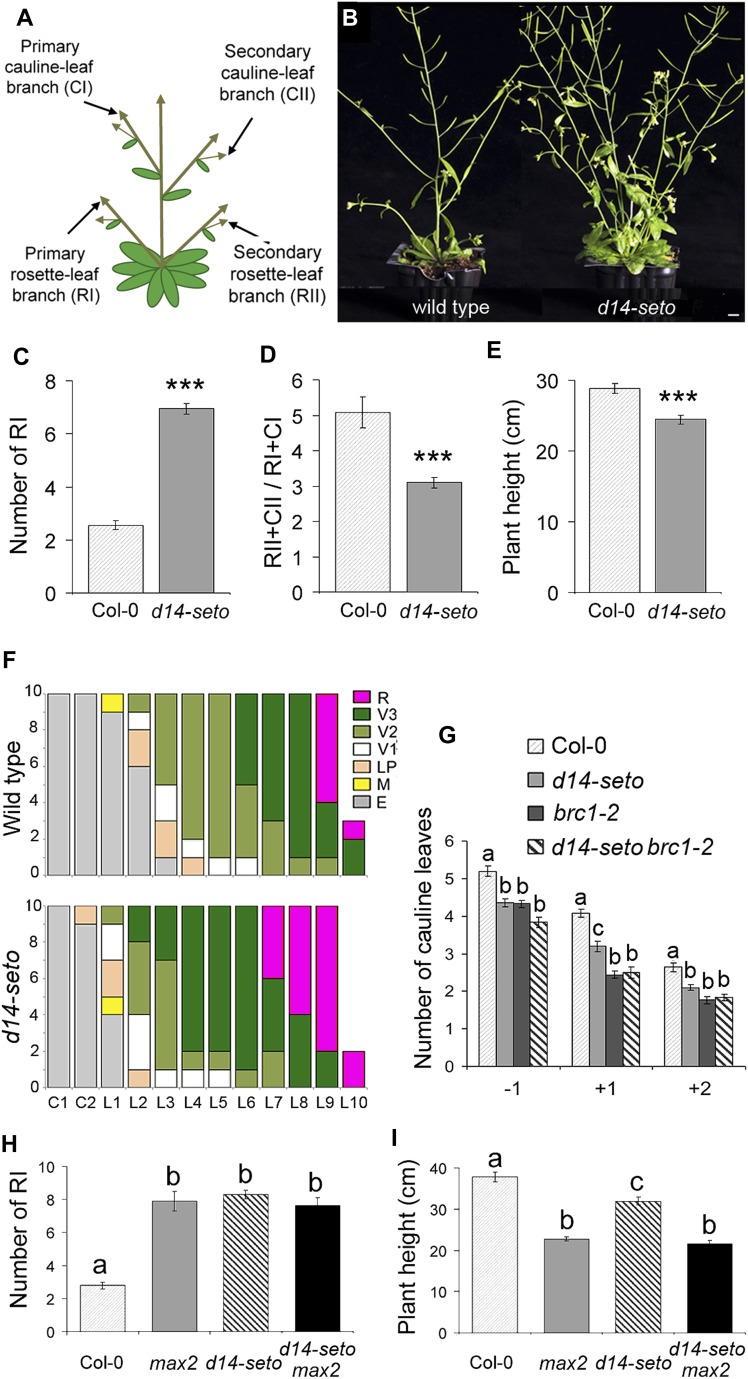Figure 1.
Phenotypes of d14-seto Single and Double mutants.
(A) Arabidopsis branching structure.
(B) Close-up of mature wild-type Col-0 (left) and seto5 (here termed d14-seto) (right) rosettes showing their lateral shoot phenotype. Bar = 1 cm.
(C) Number of primary rosette branches (RI) of wild-type and d14-seto plants.
(D) Number of secondary branches (RII+CII) relative to the number of primary branches (RI+CI).
(E) Height of the main inflorescence of the same set of plants.
(F) Developmental stages of buds in the axils of cotyledons (C1 and C2) and rosette leaves (L1 to L10) of wild-type (top) and d14-seto (bottom) individuals. R, reproductive stage, V1 to V3, vegetative stages; LP, leaf primordium stages; M, meristem; E, empty axil. Developmental stages are as defined (Aguilar-Martínez et al., 2007) (n = 10).
(G) Flowering time, expressed as number of leaves, of lateral inflorescences of wild-type, d14-seto, and brc1-2 mutants and d14-seto brc1-2 double mutants. −1, uppermost RI; +1 and +2, first and second basal-most CI branches.
(H) and (I) Number of RI branches (H) and height of the main inflorescence (I) of d14-seto max2-1 double mutants. Asterisks denote significant differences in Student’s t tests (P < 0.0001). Letters denote significant differences in one-way ANOVA test (Tukey test P < 0.05). Data shown as mean ± se (n = 20).

